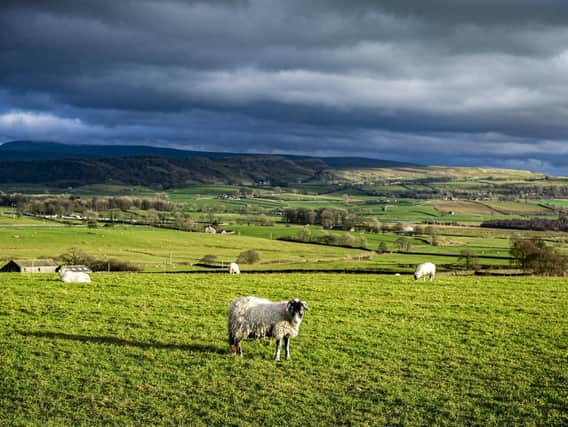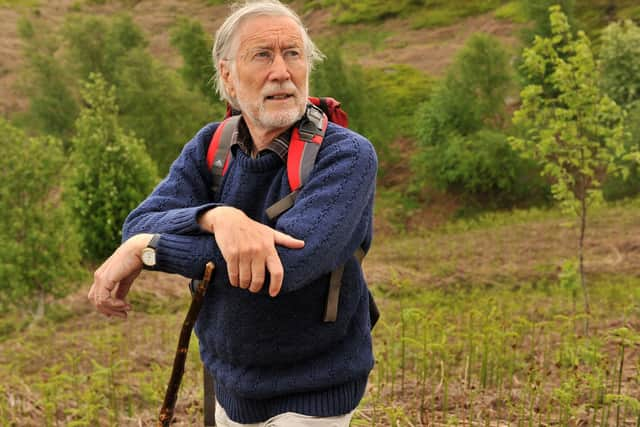How important is the work of the National Park Authorities and has it helped our precious countryside?


The North York Moors is perhaps best known for its purple carpet of heather in late summer, important for red grouse, merlin, curlew and golden plover. Indeed, here we have one of the largest continuous expanses of upland heather moorland in England.
There is the Heritage Coastline too, with its towering cliffs and rocky shores, and let’s not forget the historical landscape with its abbeys, ancient moorland crosses and other romantic reminders of the past, such as relics of the old ironstone industry.
Advertisement
Hide AdAdvertisement
Hide AdAcross in the Dales is surely the finest limestone scenery in Britain with pavements, scars, potholes and caverns offering beauty, intrigue and adventure. There are the classic Three Peaks of Ingleborough, Pen-y-ghent and Whernside, though perhaps most iconic of all is the farmed landscape of scattered farmsteads, drystone walls, field barns and flower-rich meadows.


The North York Moors National Park was designated in 1952, with the Yorkshire Dales following two years later. That may seem some time ago but in fact all 15 British National Parks count as relative youngsters in the big scheme of things, with the great-grandfather of all National Parks being Yellowstone in the United States. It became a National Park in 1872.
American National Parks though are usually areas of true natural wilderness, by and large publicly owned and managed. The British National Parks are substantially different. After thousands of years of human integration into the landscape here, the UK lacks any significant areas of real wilderness.
The mark of people has been left almost everywhere. And, like anywhere else in Britain, the land is generally privately owned. But against that, we should remember that our own National Parks often exist in their cherished state only because of human activity rather than despite it.
Advertisement
Hide AdAdvertisement
Hide AdYorkshire’s National Parks are run separately by National Park Authorities charged with conserving and enhancing natural beauty, wildlife and cultural heritage, while promoting opportunities for public enjoyment. In pursuing these twin aims they must also seek to foster the economic and social well-being of local communities.
But can they do these jobs effectively when, unlike their American counterparts, they have little direct control over the land? Maybe it is time to ask the big question: has the system delivered any real benefits?
The Dales National Park could be said to have a long history of innovation. In the 1980s, when a report slammed the footpath network in the Three Peaks area as the most severely eroded in the UK, the park authority pioneered the notion that rebuilding walking routes in rugged uplands was not only necessary but could be carried out sensitively.
Recent figures show that 90 per cent of public rights of way in the park are now easy to use. It’s rarely like that outside national parks.
Advertisement
Hide AdAdvertisement
Hide AdThe National Park Authority also set up the Dales Countryside Museum at Hawes and the fundraising Yorkshire Dales Millennium Trust and embraced the huge challenge of countering decay of dry stone walls and field barns.
Across on the North York Moors, the park authority has spearheaded restoration of ancient woodland and creation of new woods. Between 2000 and 2017, 1,400 acres of new native woodland was planted.
Meanwhile, the Sea Life, See Life project has helped showcase the natural, fishing, artistic and culinary heritage of coastal villages such as Robin Hood’s Bay, Staithes and Runswick Bay.
In both parks, benefits for the tourism industry are obvious. There are, no doubt, countless achievements the park authorities are proud of but do others think National Park designation has been worthwhile?
Advertisement
Hide AdAdvertisement
Hide AdColin Speakman is a countryside campaigner, hill walker and author. He was a founder member of the Friends of the Dales and co-creator of the Dales Way.
He says: “The evidence of the huge success of both the Yorkshire Dales and North York Moors is all around you when you visit either National Park – superb, unspoiled landscapes and villages where there would otherwise have been unsightly development and suburbia, as well as neglect of classic landscapes in need of nurturing.
“But what is less immediately evident is the extraordinary work achieved by both authorities in terms of nature conservation, working with farmers and landowners to increase biodiversity.”
The Moorland Association, which represents grouse moor owners, agrees. Robert Sword, Regional Officer for the North York Moors, has worked alongside the park authority there for 30 years. He says: “I would summarise the relationship as being positive and supportive. The authority recognises the important landscape characteristics and the need to protect sensitive ecosystems.”
Advertisement
Hide AdAdvertisement
Hide AdHowever, there are concerns about the challenges for farmers around planning regulations and diversification. And there is criticism over how the park authorities have gone about some things.
Colin Speakman says: “Less successful perhaps has been the failure to deal with visitor traffic management issues and the very inadequate public transport provision for visitors, which in both parks has now had to be led by unpaid volunteers.”
Yvonne Peacock, who runs a tearoom in the Dales and sits on the North Yorkshire County Council, also has a concern: “The Yorkshire Dales authority has failed on housing for local people. Development boundaries are drawn very tight around villages. The planners should be more flexible about housing development at the edge of villages.”
The Dales Park Authority mounts a robust defence. A spokesperson says: “We understand the importance of bus and rail services for residents and visitors. We are not, however, a provider of public transport and do not receive resources for that purpose. Our role is to support the public transport authorities that lead on initiatives for funding and delivery of bus and rail services.
Advertisement
Hide AdAdvertisement
Hide Ad“Regarding housing, there is a mismatch between house prices and local wages. There is a high proportion of housing lost as second homes, a lot of expensive traditional properties and a lack of new homes with modern amenities. As a result, the park has been steadily losing younger people and gaining elderly, often retired, people.
“Importantly, in terms of land supply there over 500 plots with planning permission or already allocated for housing in the local plan.”
In Britain realism and compromise are part of the National Park process. Where you think fine lines should be drawn within that process probably depends on your point of view.
Some Yorkshire Park statistics
Yorkshire Dales
The highest point is Whernside at 2415 feet.
Gaping Gill contains the highest unbroken waterfall in England at 322 feet.
Advertisement
Hide AdAdvertisement
Hide AdWharfedale was the last, tiny foothold of the lady’s slipper orchid in Britain before the successful reintroduction programme took place.
North York Moors
The highest point is Urra Moor at 1490 feet.
The National Park is home to the most northerly colony of the Duke of Burgundy butterfly in Britain.
There are over 700 Scheduled Monuments, 3000 listed buildings and 1500 boundary stones and crosses within the North York Moors.